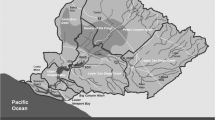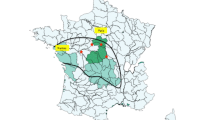Abstract.
Unhatched eggs and plasma samples from prefledged bald eagles (Haliaeetus leucocephalus) from a recovering population in the Canadian Great Lakes Basin were contaminated with organochlorine compounds at levels comparable to those reported for eagle populations in several areas of the United States. PCBs were among the most commonly detected contaminants and occurred at high concentrations in plasma. Plasma PCB concentrations in Lake Erie nestlings were significantly higher than in chicks from Lake Nipigon (0.130 and 0.047 mg/kg wet weight, respectively). Blood levels of mirex were higher in nestlings from Lake Superior compared to those from Lake Erie (0.0012 and 0.0006 mg/kg wet weight, respectively). Migration routes and over-winter locations of avian prey that constitute a part of the bald eagle chick's diet are likely to contribute to these spatial contaminant patterns in plasma. Atmospheric deposition and a cold condensation effect for chlordane compounds may have produced higher levels of these compounds in plasma samples from Lake Superior compared to samples from Lake Erie (0.020 and 0.008 mg/kg wet weight, respectively). Levels of DDE in plasma were generally low, ranging in concentration from 0.02 mg/kg wet weight for lakes Erie and Nipigon to 0.06 mg/kg wet weight for Lake Huron. Concentrations of organochlorines in eaglet plasma remained relatively stable between 1990 and 1996; no significant trends associated with year of sampling were detected. The data from Lake Erie showed no correlation between productivity and plasma levels of PCBs or DDE during this time period. There were no indications that the concentrations of contaminants detected were adversely affecting productivity in Canadian Great Lakes bald eagle populations. Residue levels in eggs from Lake Erie eagle territories were equally or more contaminated than eggs from other highly contaminated environments in the United States such as the Great Lakes and Columbia River estuary. Concentrations of DDE and PCBs in Lake Erie eggs declined significantly between 1974 and 1994. Although dieldrin and chlordane levels showed a similar decline, these relationships were not statistically significant. Mirex concentrations were relatively stable. Eggs from Lake of the Woods were significantly less contaminated than those from Lake Erie (PCBs: 3 and 84 mg/kg wet weight, respectively; DDE: 3 and 24 mg/kg wet weight, respectively). Reproductive success (number of young produced/active nest) remained constant between 1982 and 1996 and productivity is sufficient to maintain an increasing population. The number of active nests has increased during this period indicating that the population is expanding and might be expected to do so until suitable habitat becomes limiting. Reductions in organochlorine levels, reintroduction efforts, immigration from other populations, and changes in habitat quality have likely contributed to the observed growth in the number of breeding pairs.
Similar content being viewed by others
Author information
Authors and Affiliations
Additional information
Received: 30 October 1997/Accepted: 10 July 1998
Rights and permissions
About this article
Cite this article
Donaldson, G., Shutt, J. & Hunter, P. Organochlorine Contamination in Bald Eagle Eggs and Nestlings from the Canadian Great Lakes. Arch. Environ. Contam. Toxicol. 36, 70–80 (1999). https://doi.org/10.1007/s002449900444
Issue Date:
DOI: https://doi.org/10.1007/s002449900444




